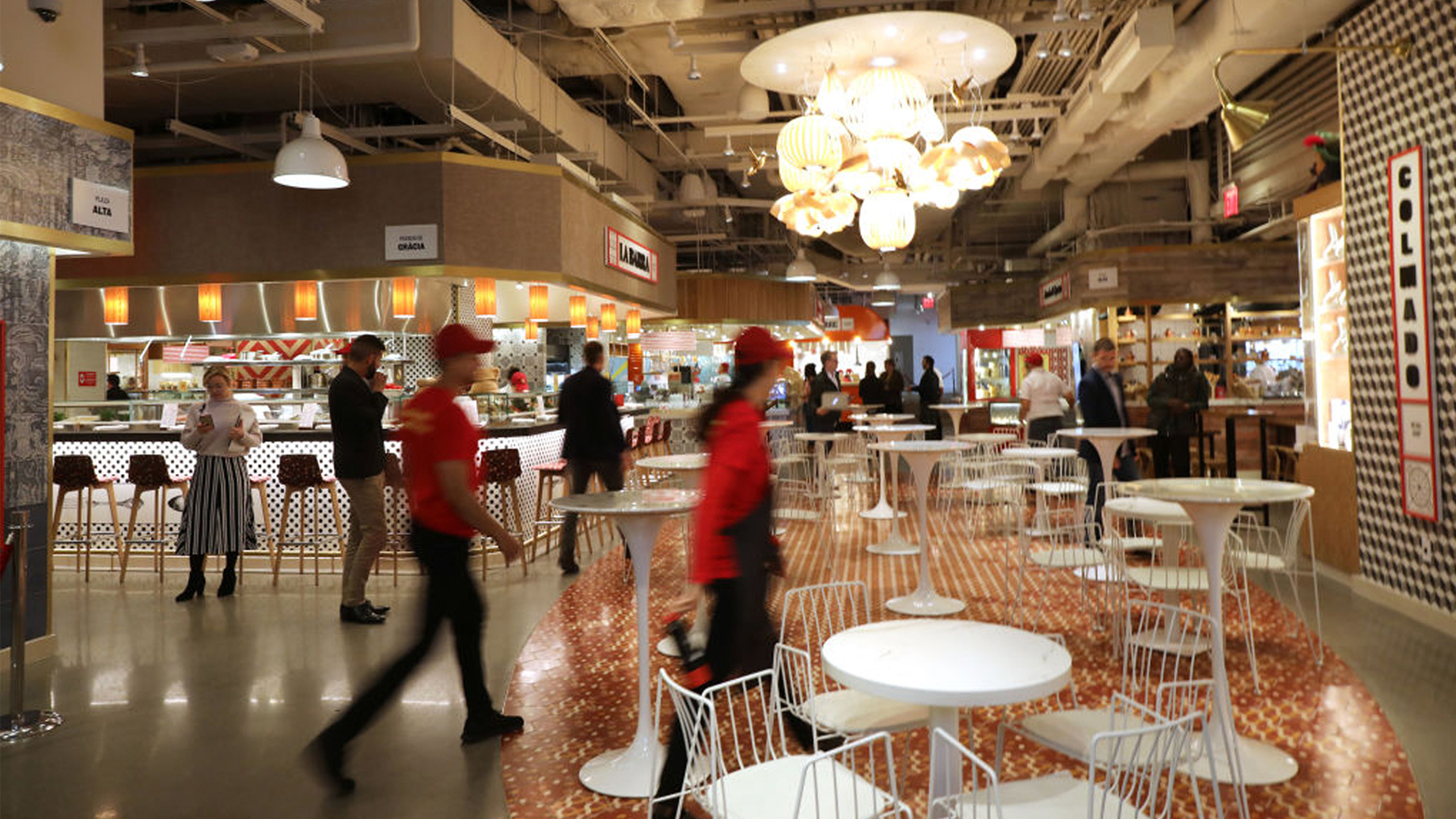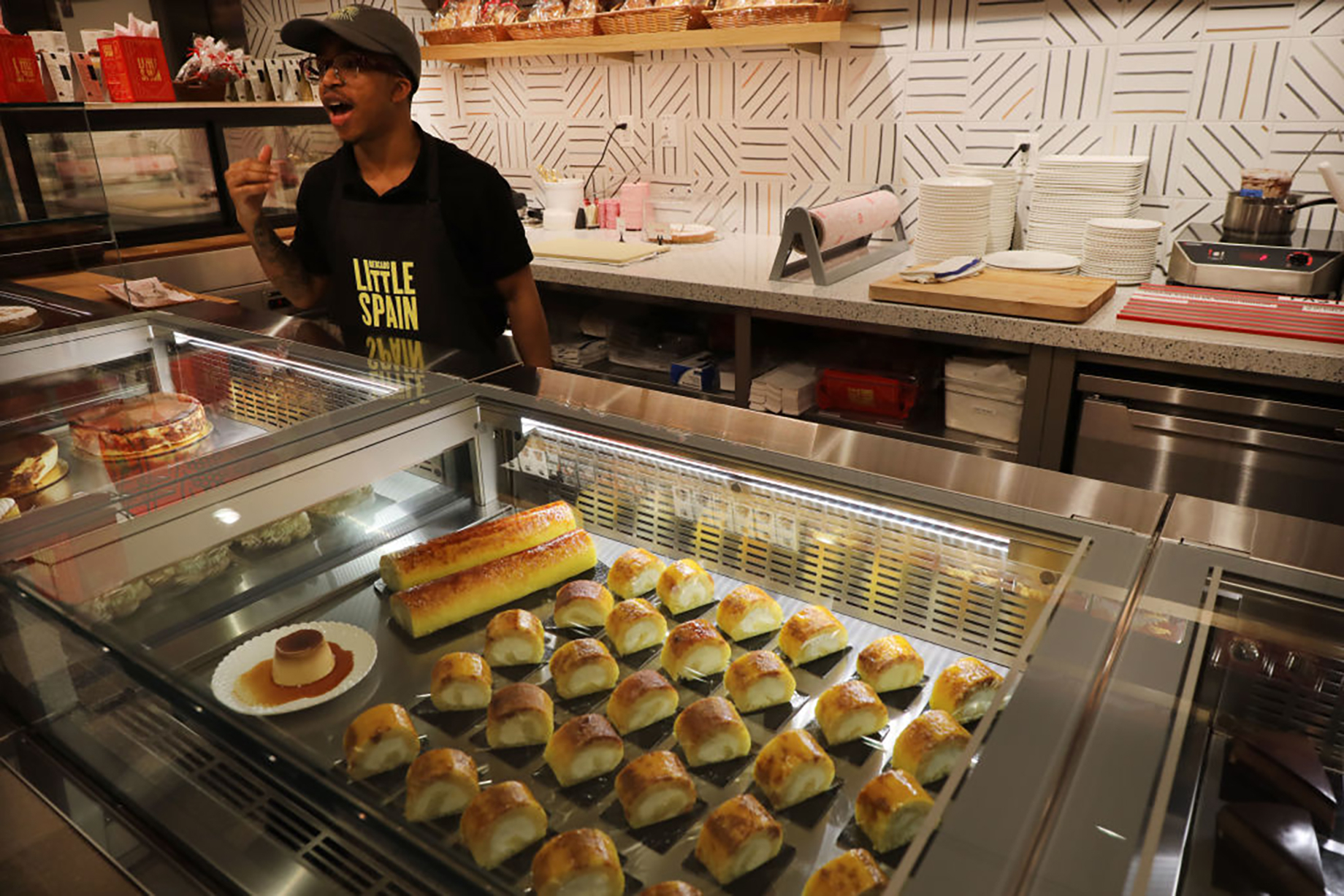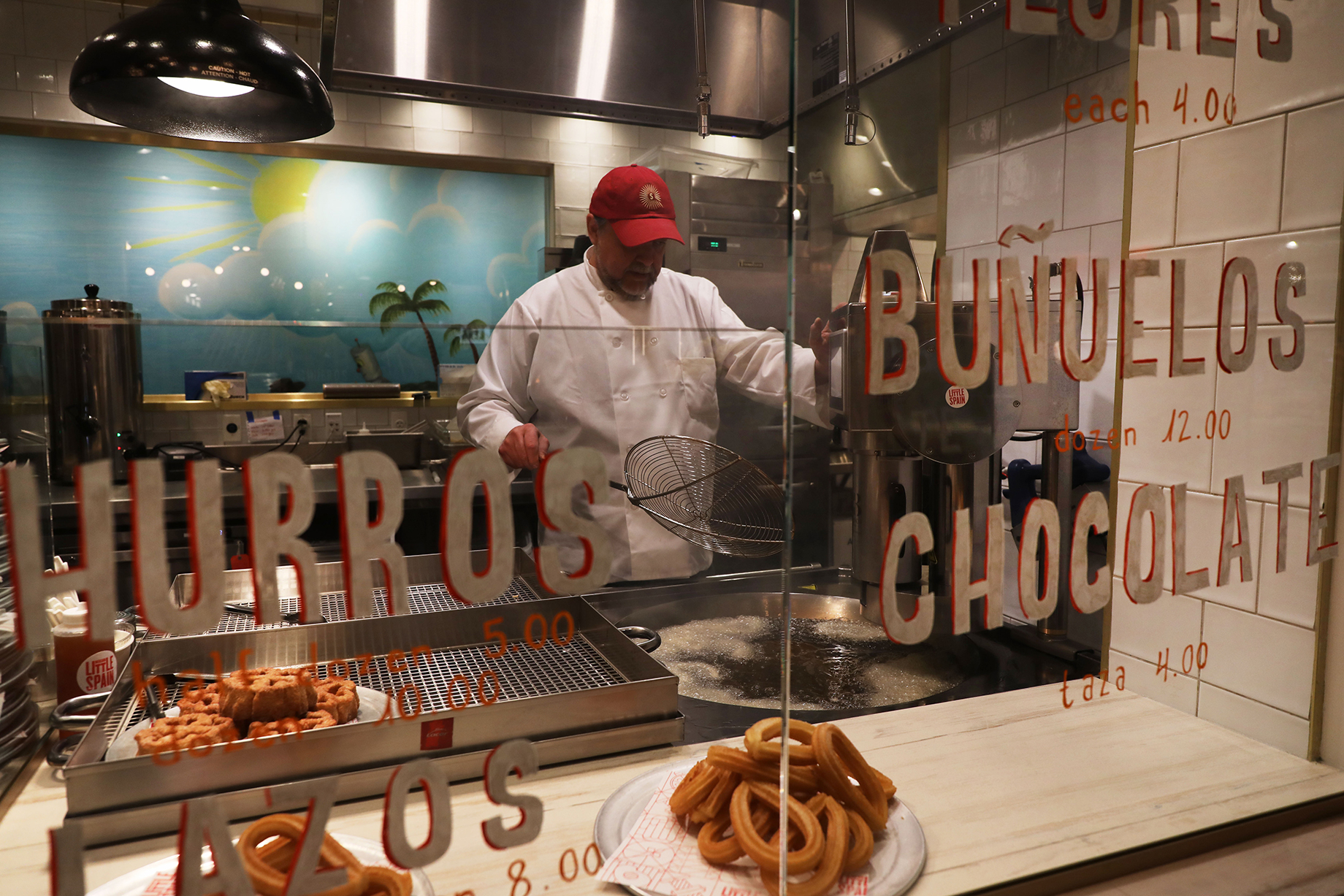Total global food-service spending is projected to grow by 13 percent over the next five years, resulting in some $359 billion in incremental value, according to JLL’s Food-Service Trends 2019 report, featured at ICSC’s Food for Thought Conference, in New Orleans.

Mercado Little Spain, in the newly opened Hudson Yards development. This 35,000-square-foot food hall, which had a soft opening on March 15, is the creation of famed chef José Andrés
Last year nearly 75 percent of food-service spending occurred at dine-in restaurants, but the rise of online food ordering globally — which is projected to reach about $365 billion by 2022 — is creating competition for the food-service industry, driving innovation and experience.
“Just like online shopping pushed traditional retailers to create an experience beyond selling goods, the rise of food delivery is now driving restaurants to innovate and adjust their offerings beyond just dining,” said Naveen Jaggi, president of JLL's retail advisory services practice. “Today consumers can get meals wherever and whenever they want, but their motivation for eating out has changed. They are creating pockets of time to enjoy and appreciate unique restaurant experiences. The same old sandwich won’t fly.”

Mercado Little Spain offers three full-service restaurants, plus wine, tapas, cocktail bars, a coffee shop and nearly a dozen food stalls
Delivery is becoming the fastest-growing dining occasion. The value of online food ordering globally is projected to grow by some 30 percent by 2022, largely on the strength of the Asia-Pacific, where growth will probably hit about 47 percent.
“The line between food service and retail is blurring, as food reinvigorates retailers and shopping centers,” said James Cook, JLL's director of retail research. "We found that shoppers who dined at the mall stayed 35 percent longer and increased transactions by 25 percent. But getting the right balance of adding food [while] not oversupplying it is crucial."

One of Mercado Little Spain's food offers
Retailers and shopping centers have been incorporating food concepts into the mix for years, and now other real estate sectors are catching on to the tangible benefits that food offerings can bring in. The JLL report examines the impact these real estate sectors are seeing as they become foodie hubs.
Visitor attractions: Repeat guests are crucial for galleries, museums and attractions to stay in business. About 17 percent of survey respondents said food-and-drink facilities that better meet their needs would encourage them to visit more frequently, and 35 percent said they look up food-and-drink options before they visit. It is therefore no surprise that these attractions are upping their food-service game.
Stadiums: A single-focus sports stadium may be in use as little as 20 times per year. This creates a challenge to a food-service operator in terms of stock and staff management, but perhaps more important, it makes revenue maximization during events critical. In the U.S. alone, roughly 45 percent of respondents said they declined to take time to go and buy food, because they were unwilling to miss any part of the game. Now, therefore, food service is part of the strategy behind earlier walkup and post-match dwell times as well as convenience during the games.
Hotels: Given rising competition from alternative accommodation options, hotel dining is turning into a key differentiator. Roughly 20 percent of the space at U.S. and Canadian hotel properties will be dedicated to food and beverage by 2025.
Transportation terminals: By 2050 roughly 70 percent of the global population will live in urban areas — and these people will need places to grab a bite to eat on the go. Migration toward a healthier range of options at transport hubs is already in evidence.
The workplace: As competition for talent intensifies, employers are looking for ways to attract and retain the best. Roughly half of employees say that employer-provided meals are very important, with about 60 percent of the respondents ranking food in the workplace among their top three office perks.
“We expect the food sector to continue to evolve at different rates across the five nontraditional retail sectors we identified, each with a different and unique approach,” said Cook. "It’s likely some will focus on Instagram-worthy experiences, and others on the basics of providing the freshest and highest-quality food."
Download the full report here.
By Brannon Boswell
Executive Editor, Commerce + Communities Today


